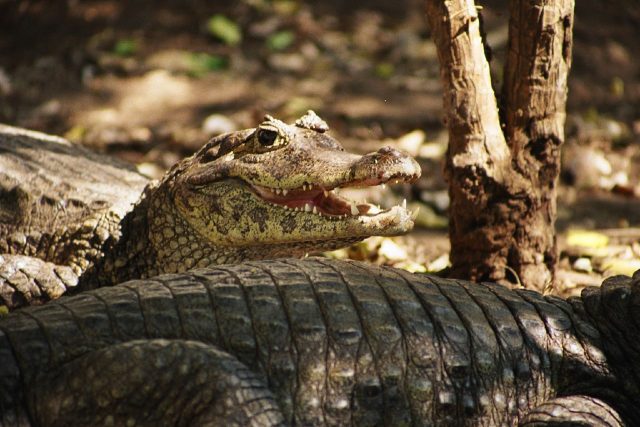Type the name of the breed you're looking for below
[wpdreams_ajaxsearchlite] Don't see the breed your're looking for? Click here and let us know!
Spectacled Caiman
| Place of Origin and Range | The Spectacled Caiman, also known as the White Caiman or Common Caiman, is a reptile found in much of Central and South America. |
| Description | The Spectacled Caiman is a small to mid-sized. Overall a grey-green colouration, this species has been known to change colour. During colder weather, the black pigment, found within their skin cells, will expand, making them appear darker. |
| Morph Patterns Available | Yes |
| Adult Size | Can grow 7 ft+ (2.1m) |
| Accommodation | Although a 9 inch long hatchling can be maintained for a short time in a 20 gallon fish tank or larger aquarium. A filtered aquarium with water temperature at 70-80'F(21-26'C), and a sloping ramp(driftwood, textured plastic or some other non-abrasive surface) leading from the bottom to an illuminated and warmed basking spot. Approx 80'F(27'C). This species is an untrustworthy pet. |
| Lifespan | Can live 20+ years |
| Feeding / Diet | Caimans eat a variety of invertebrates such as insects, crustaceans, and mollusks. Larger Caimans eat fish and water snails. Older animals are capable of taking larger, mammalian prey (e.g. wild pigs). As conditions become drier, Caimans stop feeding. In areas where this species has become depleted, fish populations have also shown a decline. |
| Breeding | The Spectacled Caiman reaches sexual maturity from four to seven years old. Usually, the more dominant individuals mature more quickly. They gather and mate during the dry season. After mating season ends, the females build nests out of dense vegetation. The size of the nest varies depending on the resources available to the female. Each female can lay up to 40 eggs. The larger females have recently been found to lay larger eggs than smaller females lay. Most Caimans nest during the wet season. It is very unusual to see a Caiman nest during any winter months; the temperature is too low for the eggs. Temperature is important to the developing eggs, so females build their nests in a way that insulates them from extreme temperature changes. The nests are made of vegetation; as the vegetation decays, the nests produce heat which can keep the eggs about 5°C warmer than if they were insulated by mud alone. Heat not only incubates the eggs, but also determines the sex of the developing Caimans. When the temperature inside the nest is about 31°C or lower, the Caiman will become male. However, when the temperature is about 32°C or higher, they become female. Young Caimans do not hatch with the dark-green colouring of their parents. They are yellow with black spots. This colouration will eventually fade away. Spectacled Caimans have strongly protective maternal behaviour. They raise their young in crèches, one female taking care of her own, as well as several others' offspring. They take care of their young for the first two to four months after the eggs hatch, the time it takes for the floods of the wet season to subside. |



